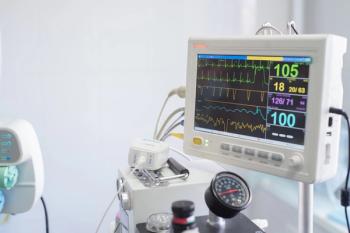
Do dense breasts mean more imaging?
A new study looks at whether or not women with dense breasts require alternative screening methods. Conventional wisdom about reducing salt intake to lower blood pressure may not be correct. What's the impact of breastfeeding on reducing the recurrence of certain breast cancer types.
With more states mandating disclosures to women about
The research, by investigators from the Breast Cancer Surveillance Consortium (BCSC), suggests that breast density shouldn’t be the sole criterion for deciding whether a woman needs supplemental imaging. Rather, the authors say, breast density should be combined with use of the BCSC Risk Calculator.
Designed for use by health professionals, the calculator takes into consideration a woman’s age, race/ethnicity, family history of breast cancer, history of breast biopsy, and BI-RADS breast density. The tool has been validated in 1.1 million women undergoing
In the new study, the BCSC authors looked at the BI-RADS breast density, BCSC 5-year breast cancer risk, and rate of interval cancers (invasive cancer ≤12 months after a normal mammogram) per 1000 mammograms. The prospective cohort included 365,426 women aged 40 to 74 who had 831,455 digital screening mammograms.
Rates of interval cancer were high in women with 5-year risk ≥1.67% and extremely dense breasts and in those with 5-year risk ≥2.50% who had heterogeneously dense breasts (24% of all women with dense breasts). The interval rate for advanced-stage disease was highest (>0.4 case per 1000 examinations) in women with 5-year risk ≥2.50% and heterogeneously or extremely dense breasts (21% of all women with dense breasts).
In contrast, 5-year risk was low to average (0% to 1.66%) for 51.0% of women with heterogeneously dense breasts and 52.5% of those with extremely dense breasts, with interval cancer rates of 0.58 to 0.63 and 0.72 to 0.89 case per 1000 examinations, respectively.
BSCS 5-year risk combined with BI-RADS breast density, the authors concluded, can identify women at high risk of interval cancer and help inform physician/patient discussions about alternative screening strategies.
Is salt really the key to lowering blood pressure in teens?
The trick to improving
For the research, the effect of dietary sodium, potassium, and the potassium-to-sodium ratio were studied in 2185 white and black girls from sites in Richmond, California; Cincinnati; and Washington, DC. All were aged 9 to 10 years at baseline and were followed for 10 years, from March 1987 through February 1999. Results were adjusted for race, height,
Sodium intakes fell into four ranges: 19.4% of participants had <2500 mg/d, 29.5% had 2500 mg/d to <3000 mg/d, 41.4% had 3000 mg/d to <4000 mg/d (41.4%), and 9.7% had 4000 mg/d or more. In 36.0% of participants, potassium intake was <1800 mg/d, compared with 1800 mg/d to <2100 mg/d in 26.2%, 2100 mg/d to <2400 mg/d in 18.8%, and 2400 mg/d or more in19.0%.
Overall, the researchers found no evidence that higher sodium intakes (3000 to <4000 mg/d and ≥4000 mg/d vs <2500 mg/d) had an adverse impact on adolescent blood pressure. Girls who consumed 3500 mg/d or more generally had lower diastolic blood pressure than did those who consumed <2500 mg/d (P = .18). On the other hand, higher potassium intakes were inversely associated with blood pressure during adolescence (P < .001 for systolic and diastolic) and at the end of the study’s follow-up period (P = .02 and P = .05 for systolic and diastolic, respectively).
Researchers concluded that consuming more than 3500 mg/d of sodium had no adverse impact on blood pressure. Instead, consuming foods rich in potassium may help suppress any adolescent increase in blood pressure, thanks to the beneficial effects of
Breastfeeding and breast cancer prognosis
Breastfeeding is known to reduce risk of
The research, by investigators from Kaiser Permanente, involved 1636 women from 2 prospective cohorts of breast cancer patients. PAM50 gene expression assay was used to determine whether the women’s
Women with breast cancer who had basal-like tumors were less likely to have a history of breastfeeding than those who had luminal A tumors (odds ratio = 0.56, 95% confidence interval [CI] 0.39 to 0.80). Among all patients with the disease, any history of breastfeeding was associated with a decreased risk of recurrence (hazard ratio [HR] 0.70, 95% CI 0.53 to 0.93), and the connection was especially pronounced in women with a history of breastfeeding for 6 or more months (HR. 0.63, 95% CI = 0.46 to 0.87, P trend = .01). Similar associations were seen for breast cancer deaths.
In women with luminal A tumors, a history of breastfeeding was linked with a decreased risk of
The researchers concluded that breastfeeding could impact prognosis and survival in women who have luminal tumors by creating an environment with a lower rate of proliferation.
Newsletter
Get the latest clinical updates, case studies, and expert commentary in obstetric and gynecologic care. Sign up now to stay informed.
















